Nfts
Securing The Amazing Blockchain World In 2024
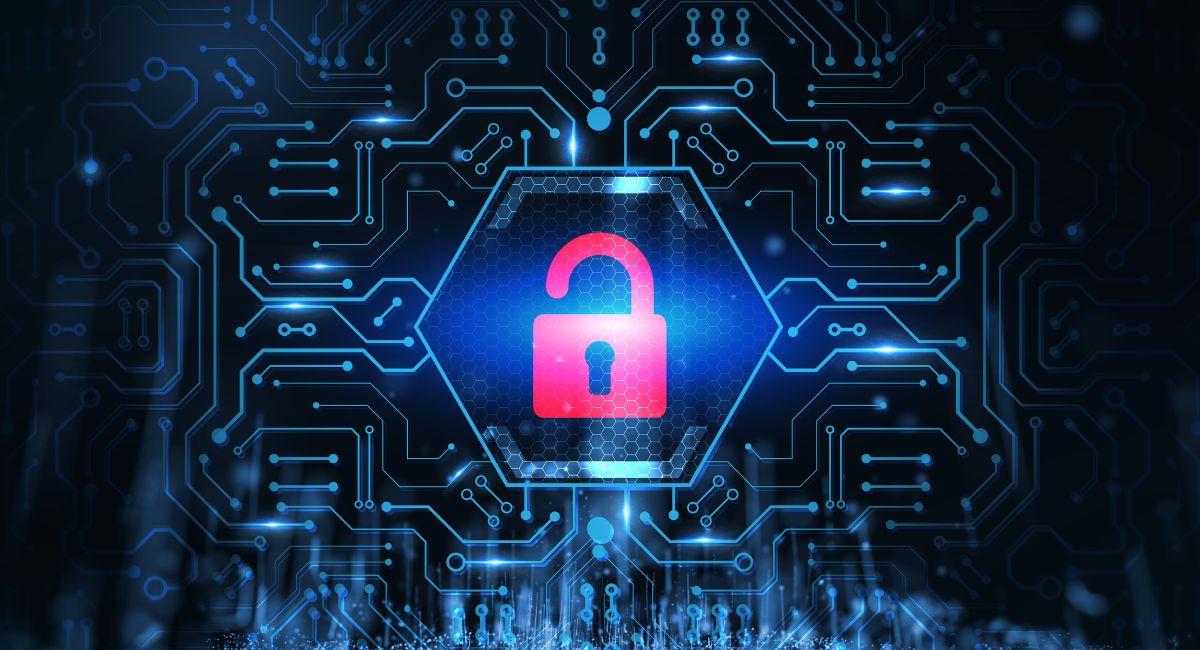
May 31, 2024 by Diana Ambolis
38
Non-fungible tokens (NFTs) have exploded in popularity, revolutionizing digital ownership and fueling a multi-billion dollar industry. But with great innovation comes great responsibility. NFT smart contracts, the self-executing code underpinning these tokens, hold immense power and require rigorous testing to ensure their security and functionality. This guide delves deep into the world of NFT smart
Non-fungible tokens (NFTs) have exploded in popularity, revolutionizing digital ownership and fueling a multi-billion dollar industry. But with great innovation comes great responsibility. NFT smart contracts, the self-executing code underpinning these tokens, hold immense power and require rigorous testing to ensure their security and functionality. This guide delves deep into the world of NFT smart contract testing, equipping you with the knowledge and strategies to safeguard your creations.
Understanding the Landscape: NFT Smart Contracts and Their Workings
Before diving into testing, let’s establish a foundational understanding of NFT smart contracts. Unlike fungible tokens (like cryptocurrency), NFTs represent unique digital assets. An NFT smart contract governs the creation, ownership, and transfer of these assets on a blockchain network. It essentially acts as a digital ledger, automatically executing predefined rules for minting (creating), owning, and trading NFTs.
These contracts are typically written in Solidity, a programming language specifically designed for building smart contracts on the Ethereum blockchain (though other blockchains have their own languages). The code defines functions that dictate actions like:
- Minting: This function establishes the process for creating new NFTs, often involving a fee or specific conditions.
- Ownership Transfer: This function facilitates the transfer of ownership between users, ensuring a secure and transparent record of who holds the NFT.
- Metadata Management: This function governs how additional information about the NFT, like its name or description, is stored and accessed.
Why Testing NFT Smart Contracts is Crucial: Safeguarding Your Digital Assets
In the burgeoning world of Non-Fungible Tokens (NFTs), where digital creations command real-world value, the foundation of every NFT lies within its smart contract. This self-executing code governs the creation, ownership, and transfer of the NFT asset. However, a single line of faulty code within this smart contract can have disastrous consequences, potentially leading to financial losses, reputational damage, and even the complete loss of your precious NFT. This is why testing NFT smart contracts before deployment is absolutely crucial.
The High Stakes of Untested Code:
- Financial Shenanigans: Buggy smart contracts can be exploited by malicious actors, leading to the theft of your NFT or facilitating unauthorized minting of additional NFTs, diluting the value of your original asset. Imagine a limited edition artwork NFT being endlessly replicated due to an exploitable vulnerability – a collector’s worst nightmare.
- Functionality Fiascoes: Untested code can lead to malfunctions within the smart contract, rendering it incapable of performing its intended functions. This could prevent the proper transfer of ownership, lock your NFT in an inaccessible state, or even impede the very creation of the NFT itself. A smart contract meant to auction a unique digital collectible failing to function altogether would be a major setback for any project.
- Reputational Ruin: Deploying a faulty smart contract can severely damage the reputation of your NFT project. Investors and collectors will be wary of associating themselves with a project riddled with security vulnerabilities, leading to a loss of trust and potential financial losses. A bad reputation in the unforgiving world of NFTs can be incredibly difficult to overcome.
The Benefits of Rigorous Testing:
- Fort Knox Security: Thorough testing helps identify and eliminate vulnerabilities within the smart contract code, fortifying it against potential attacks. This creates a secure environment for your NFT, minimizing the risk of theft or unauthorized access. Imagine your NFT residing in a digital vault, protected by robust security measures implemented through rigorous testing.
- Flawless Functionality: Testing ensures the smart contract operates precisely as intended. This guarantees that ownership transfers occur seamlessly, minting functions flawlessly, and all other functionalities operate as planned. A well-tested smart contract ensures a smooth and predictable user experience for everyone involved in the NFT project.
- Building Trust and Confidence: By demonstrating a commitment to security through comprehensive testing, you instill trust and confidence in potential investors and collectors. A project with a demonstrably secure smart contract is far more likely to attract interest and generate a vibrant community around the NFT.
Beyond the Basics: Different Testing Approaches
There’s no one-size-fits-all approach to testing NFT smart contracts. Here’s a glimpse into some of the common testing methodologies:
- Unit Testing: This method isolates individual components of the smart contract code and tests them independently, ensuring each function operates as expected. Imagine meticulously examining each gear and cog within a complex machine to identify any potential malfunctions.
- Integration Testing: This approach evaluates how the smart contract interacts with other external systems, such as NFT marketplaces or cryptocurrency wallets. Think of testing how different parts of a machine work together seamlessly to achieve a desired outcome.
- Security Audits: Enlisting the expertise of security professionals to conduct in-depth audits of the smart contract code helps identify potential vulnerabilities that might be missed through internal testing. Imagine bringing in a team of security specialists to assess your digital vault’s defenses for any weaknesses.
Testing NFT smart contracts is not an optional step; it’s an essential safeguard for the security and value of your digital assets. By investing in thorough testing, you can create a secure and reliable foundation for your NFT project, fostering trust, ensuring functionality, and ultimately, protecting the value of your prized NFTs. Remember, in the realm of NFTs, a secure smart contract is the cornerstone upon which a successful and sustainable project is built.
Also, read – Top 10 Amazing Ways Smart Contracts Help In Royalty Distribution Of NFTs
A Multi-Layered Approach to Testing NFT Smart Contracts: Building Fortresses for Your Digital Assets
The world of Non-Fungible Tokens (NFTs) is booming, with unique digital creations fetching real-world fortunes. However, underpinning every NFT lies its lifeblood – the smart contract. This self-executing code dictates the creation, ownership, and transfer of the NFT asset. But a single line of faulty code within this contract can be catastrophic, leading to financial losses, reputational damage, and even the complete loss of your precious NFT.
This is where a multi-layered approach to testing NFT smart contracts becomes crucial. Just like building a secure fortress, ensuring the robustness of your NFT smart contract involves fortifying it from various angles. Here’s a deep dive into the essential layers of testing that safeguard your digital assets:
Layer 1: Unit Testing – The Building Blocks
- Microscopic Scrutiny: Unit testing focuses on the fundamental building blocks of your smart contract – individual functions. Each function is isolated and rigorously tested to ensure it operates precisely as intended. This meticulous process identifies bugs within the code that might otherwise remain hidden, preventing them from wreaking havoc in the grand scheme.
- Benefits:
- Early Bug Detection: Unit testing nips bugs in the bud before they can escalate into larger problems. This saves time and resources compared to fixing issues after deployment.
- Modular Verification: By testing individual functions, developers can pinpoint the exact source of any errors, facilitating faster and more efficient debugging.
Layer 2: Integration Testing – Connecting the Dots
- Beyond the Code: Integration testing delves deeper, evaluating how the smart contract interacts with external systems it relies upon. This could include NFT marketplaces, cryptocurrency wallets, or even oracle networks that provide external data feeds. The focus here is on ensuring seamless communication and data exchange between these systems and your smart contract.
- Benefits:
- Unforeseen Interactions: Integration testing identifies potential issues that might arise due to unexpected interactions with external systems. This ensures the overall functionality of your NFT project remains smooth and uninterrupted.
- Real-World Simulation: By simulating real-world scenarios, integration testing provides valuable insights into how the entire NFT ecosystem will operate once deployed.
Layer 3: Security Audits – Bringing in the Specialists
- Fortress Walls and Moats: Security audits involve calling upon the expertise of seasoned security professionals. These specialists meticulously examine your smart contract code, employing advanced techniques to identify vulnerabilities that might be missed through internal testing. Think of them as security architects, identifying any weaknesses in your digital fortress’s walls and defenses.
- Benefits:
- Advanced Threat Detection: Security audits have the power to uncover complex vulnerabilities that might escape the scope of traditional testing methods. This extra layer of protection significantly reduces the risk of your NFT project being compromised.
- Peace of Mind: A successful security audit provides invaluable peace of mind, assuring you that your NFT smart contract is built on a foundation of robust security.
Layer 4: Gas Optimization Testing – Keeping Costs in Check
- Fuel Efficiency: Every interaction with a smart contract involves “gas fees,” the computational cost paid to the network for executing the code. Gas optimization testing focuses on minimizing the gas required for your smart contract’s functions to operate. Think of it as ensuring your digital fortress runs efficiently, without incurring unnecessary fuel costs.
- Benefits:
- Cost-Effective Transactions: By minimizing gas costs, gas optimization ensures a smoother user experience for NFT buyers and sellers. Lower transaction fees can incentivize wider participation and potentially increase the value of your NFTs.
- Sustainable Development: Minimizing gas usage contributes to the overall sustainability of the blockchain network by reducing its energy consumption.
Beyond the Layers: Continuous Monitoring
The testing process doesn’t end with deployment. Continuous monitoring is essential to identify any unforeseen vulnerabilities or unexpected behavior that might emerge with real-world use. Think of it as having a dedicated security team constantly patrolling the grounds of your digital fortress to address any potential threats.
By implementing a multi-layered approach to testing NFT smart contracts, you go beyond simply building a functional platform – you build trust and confidence. Investors and collectors are more likely to be drawn to projects that demonstrate a commitment to security and a robust testing methodology. Ultimately, a well-tested NFT smart contract serves as the cornerstone for a successful and sustainable project, safeguarding your digital treasures for years to come. Remember, in the ever-evolving world of NFTs, a secure and well-tested smart contract is the key to unlocking its full potential.
Best Practices for Robust NFT Smart Contract Testing: Fortifying Your Digital Armory
The Non-Fungible Token (NFT) landscape is teeming with innovation and opportunity. Unique digital creations are fetching real-world value, but with this growth comes a critical responsibility – ensuring the security and functionality of the underlying smart contracts that govern these NFTs. A single line of faulty code can have devastating consequences, leading to financial losses, reputational damage, and even the complete loss of your precious NFT assets.
This is where robust testing practices come into play. Just like a skilled warrior needs a well-honed arsenal, a well-tested NFT smart contract serves as your digital shield, protecting your NFTs from potential threats. Here’s a comprehensive guide to the best practices that will ensure your NFT smart contract stands strong:
Laying the Foundation: Planning and Preparation
- Define Your Testing Scope: Before embarking on the testing journey, clearly define the functionalities and features your NFT smart contract needs to deliver. This scope will guide your testing strategy and ensure all critical aspects are thoroughly evaluated. Imagine a meticulous battle plan outlining the functionalities your NFT smart contract needs to excel in.
- Embrace Automation: Leverage the power of automation tools for repetitive testing tasks. This frees up valuable developer time for more complex testing scenarios and ensures consistent, repeatable testing throughout the development lifecycle. Think of automation as having loyal companions who tirelessly practice basic combat maneuvers, freeing you to focus on advanced battle strategies.
Building Your Arsenal: Testing Methodologies
- Unit Testing: The Bedrock of Security: Start with a rock-solid foundation by implementing unit testing. This method isolates and tests individual functions within the smart contract code, ensuring each one operates as intended. Treat each function as a crucial component of your digital armor, meticulously testing its functionality for any weaknesses.
- Integration Testing: Ensuring Seamless Workflow: Move beyond isolated components and delve into how your smart contract interacts with external systems. This might include NFT marketplaces, cryptocurrency wallets, or oracle networks. Integration testing guarantees a smooth and uninterrupted flow of information between these systems and your smart contract, ensuring a well-coordinated battle plan.
- Security Audits: Calling in the Specialists: Don’t go into battle alone. Enlist the expertise of seasoned security auditors. These specialists employ advanced techniques to uncover vulnerabilities that might escape internal testing. Think of them as wise advisors, identifying any chinks in your digital armor and suggesting appropriate reinforcements.
- Gas Optimization Testing: Efficiency is Key: While security is paramount, efficiency is crucial as well. Gas optimization testing helps minimize the gas fees associated with smart contract interactions. This keeps your NFT project user-friendly and cost-effective, attracting a wider audience and potentially increasing the value of your NFTs. Imagine optimizing your army’s movements to ensure swift and cost-effective victory.
Sharpening Your Skills: Advanced Testing Techniques
- Fuzz Testing: Exposing the Unexpected: Fuzz testing involves bombarding your smart contract with random or unexpected data inputs. This helps identify potential vulnerabilities that might not be apparent under normal testing conditions. Imagine simulating a chaotic battlefield scenario to test your digital defenses against unforeseen attacks.
- Formal Verification: Mathematical Proof: For particularly complex smart contracts, consider formal verification. This rigorous mathematical approach involves proving the code’s behavior aligns with its intended purpose. Think of it as employing a logician to mathematically guarantee the effectiveness of your battle strategy before deployment.
Maintaining Vigilance: Continuous Monitoring
The testing process doesn’t end with deployment. Continuously monitor your smart contract for any unforeseen vulnerabilities or unexpected behavior that might emerge with real-world use. Imagine having scouts constantly patrolling the perimeter of your digital fortress, identifying any potential threats before they escalate into major problems.
Communication is Key: Fostering Collaboration
Open communication and collaboration between developers, security auditors, and testers are vital for successful NFT smart contract testing. Regularly share test results, identify potential issues, and work together to find solutions. Think of fostering a strong team spirit where everyone contributes their expertise to fortifying your digital defenses.
By adhering to these best practices for robust NFT smart contract testing, you go beyond simply building a functional platform – you build trust and confidence. Investors and collectors will be more likely to engage with your project if they know the underlying smart contract is secure and well-tested. Ultimately, a robustly tested NFT smart contract serves as the cornerstone for a thriving NFT ecosystem, safeguarding your digital assets and paving the way for a successful and sustainable future. Remember, in the ever-evolving world of NFTs, a well-tested smart contract is your most valuable weapon in the digital marketplace.
Tools and Resources for Streamlined Testing
The good news is there are excellent tools and resources available to streamline your NFT smart contract testing journey. Here are some popular options:
- Truffle: A popular framework for developing and testing Ethereum smart contracts. It provides a suite of tools for writing tests, deploying contracts, and interacting with the blockchain.
- Hardhat: Another well-regarded framework with a focus on developer experience. It offers a modular approach and integrates seamlessly with testing tools.
- Remix IDE: A web-based IDE specifically designed for developing and testing smart contracts. It allows for direct interaction with the blockchain and debugging capabilities.
- OpenZeppelin: A library of open-source, community-tested smart contract components. Utilizing these pre-built and audited components can save development time and enhance security.
Beyond Testing: Additional Security Considerations
While testing is a cornerstone of NFT smart contract security, it’s not the only line of defense. Here are some additional security considerations to keep in mind:
- Formal Verification: This advanced technique employs mathematical methods to formally prove the correctness of a smart contract. While complex and resource-intensive, it can offer the highest level of assurance for critical contracts.
- Secure Coding Practices: Following secure coding practices for Solidity development is crucial. This includes using type-safe languages, avoiding common vulnerabilities like integer overflows, and employing libraries with a strong security track record.
- Smart Contract Auditing Services: Consider engaging a reputable smart contract auditing service after development is complete. These services offer a comprehensive security review by experienced blockchain security professionals.
Conclusion: Building Trust and Confidence in the NFT Ecosystem
By implementing a rigorous testing strategy and adhering to best practices, developers can build secure and reliable NFT smart contracts. This, in turn, fosters trust and confidence within the NFT ecosystem, paving the way for continued innovation and adoption. Remember, security is an ongoing process, not a one-time fix. Regularly review and update your smart contracts to address new vulnerabilities and stay ahead of evolving threats.
Taking the Next Step:
This guide has equipped you with the foundation for testing NFT smart contracts. As you delve deeper, explore the resources mentioned and consider enrolling in online courses or workshops to gain hands-on experience. By actively contributing to secure smart contract development, you’ll play a vital role in shaping a robust and sustainable future for the NFT landscape.
Nfts
NFTs Maintain Upward Momentum, Sales Volume Surpasses $107 Million
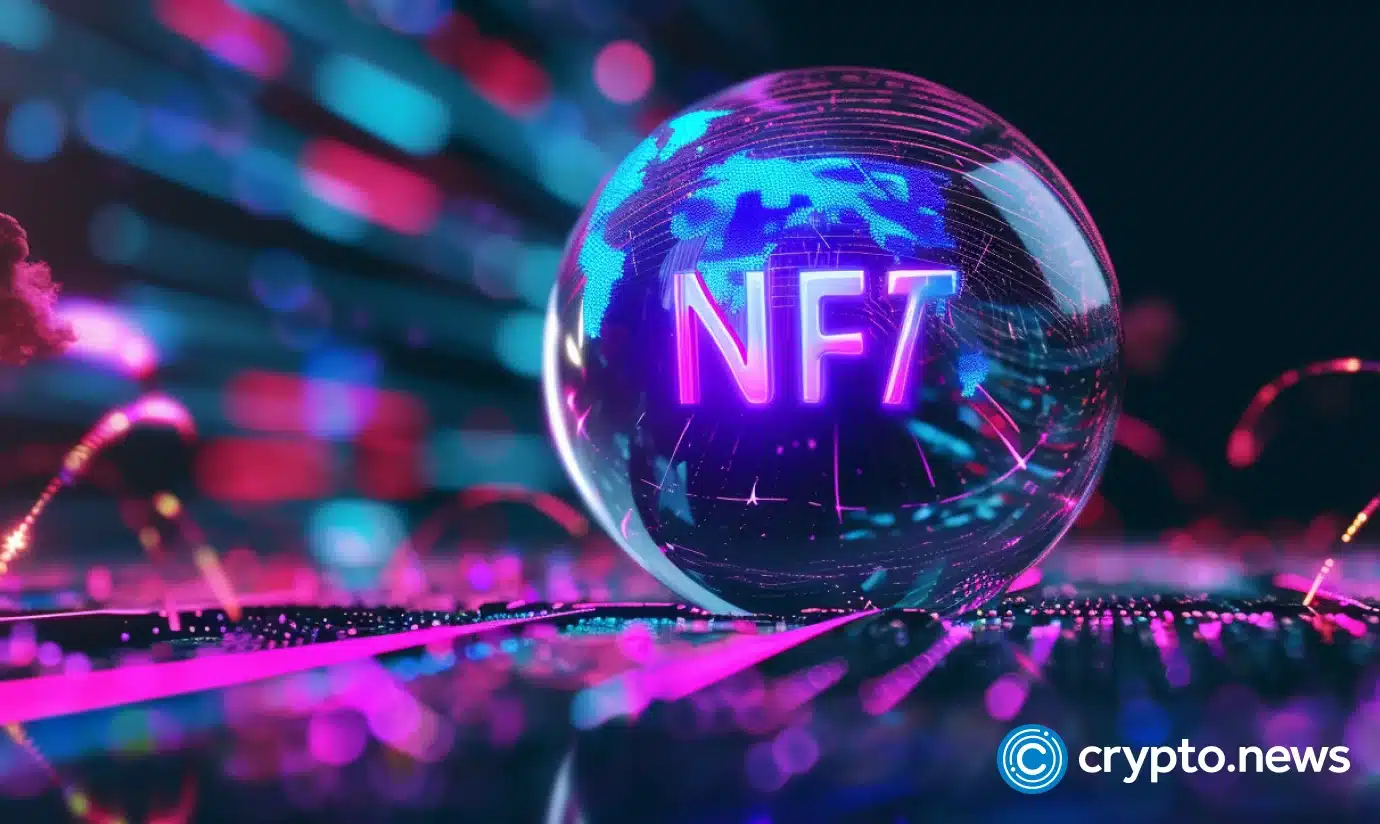
Non-fungible tokens, or NFTs, saw sales volume surge for the second week in a row, reaching $107 million, an increase of 8.5%.
A substantial increase in the number of NFT Buyers accompanied this growth, reaching 488,141 — a staggering increase of 89.56%.
On the other hand, the number of NFT sellers also increased by 69.8%, totaling 198,450, signaling an improved business environment and increased market engagement.
Below is a look at what happened in the NFT market over the past week.
Ethereum Maintains Leading Position While Solana and Bitcoin Follow
Blockchains by weekly NFT sales volume | Source: CryptoSlam
Over the past few weeks, Ethereum (ETH) continued to dominate the NFT market with $36.6 million in total sales, driven by 35,236 buyers, a 46.31% increase from the previous week.
Solana (GROUND) has emerged as a serious competitor, recording total revenue of $26.15 million, thanks to a substantial 114.07% increase in the number of buyers.
Bitcoin (Bitcoin) The NFT market also saw a notable surge, with total sales reaching $21.4 million, thanks to a staggering 222.29% increase in buyers.
Polygon (MATICS), which had the second best performance the previous week, saw its total sales volume drop by more than 15%, dropping it to 4th place just ahead of Immutable (IMX).
Other notable performances were achieved by Zora and Blast, which recorded the two largest percentage increases in sales volume, at 463% and 227% respectively.
Best Collections: Solana Monkey Business Shines
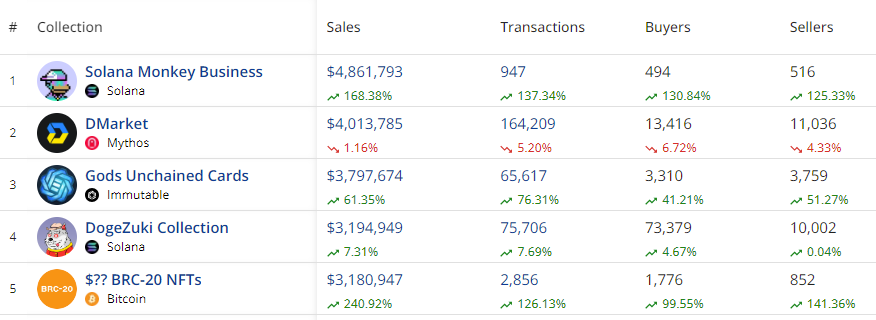 Ranking NFT collections by weekly sales volume | Source: CryptoSlam
Ranking NFT collections by weekly sales volume | Source: CryptoSlam
Among the top NFT collections, Solana Monkey Business came out on top with $4.86 million in sales, an increase of 168.38%. The collection also saw a significant increase in transactions (137.34%) and buyers (130.84%).
The DMarket collection on the Mythos blockchain, which recorded $4.01 million in sales, came in a close second. Interestingly, this is the only collection among the top 5 by sales volume to see a decline in the number of transactions and buyers.
Immutable’s Gods Unchained cards also made headlines with $3.8 million in sales, an increase of 61.35%. This collection saw notable growth in both transactions (76.31%) and buyers (41.21%), a testament to the growing popularity of blockchain-based trading cards.
Best-Selling NFTs and Fan Tokens
In terms of individual sales, Ethereum’s Autoglyphs #167 led with a sale of $274,561, followed by Bitcoin’s Protoshrooms with $148,574. Other notable sales included BNB’s kNFT: Locked kUSDT and Arbitrum’s Umoja Synths, highlighting the diversity and breadth of the NFT market across different blockchains.
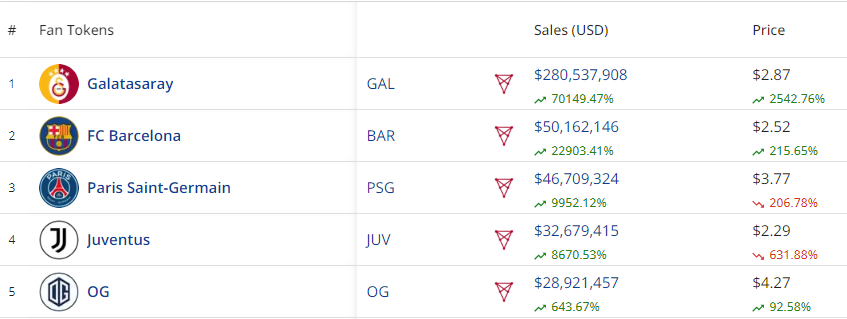 Top 5 Fan Tokens by Sales Volume
Top 5 Fan Tokens by Sales Volume
As can be seen in the table above CryptoSlamFan tokens also continued to see explosive growth, with Galatasaray’s token on the Chiliz blockchain recording a turnover of $280.5 million. This reflects an increase of 70149.47%.
FC Barcelona and Paris Saint-Germain followed with substantial sales volumes, indicating the growing popularity of sports-related NFTs.
Market consequences
The latest performance of the NFT market marks a significant turnaround, demonstrating resilience and renewed investor interest after a period of declining sales volumes.
This is the second consecutive week of improved sales, suggesting a potential upward trend. It is worth noting that this resurgence comes amid a broader recovery in the cryptocurrency market, which is currently valued at $2.55 trillion.
Major cryptocurrencies like Bitcoin, Ethereum, BNB, and Solana have all registered Prices have risen by double digits over the past week, further fueling optimism in the digital asset sector.
The correlation between rising cryptocurrency prices and the recovery of the NFT market could be an indication of strengthening investor confidence, setting a positive tone for the coming weeks.
Nfts
APENFT’s One-Day Trading Volume Hits $16.67 Million (NFT)

APENFT (NFT) fell 0.3% against the U.S. dollar in the 24-hour period ending at 9:00 a.m. ET on July 21. APENFT has a market cap of $8.54 million and $16.67 million worth of APENFT was traded on exchanges over the past day. Over the past week, APENFT has been trading 3.1% lower against the US Dollar. One APENFT token can now be purchased for around $0.0000 or 0.00000000 BTC on major cryptocurrency exchanges.
Here’s how other cryptocurrencies performed over the past day:
- KILT Protocol (KILT) is up 1.9% against the dollar and is now trading at $0.20 or 0.00000302 BTC.
- Aidi Finance (BSC) (AIDI) fell 2.2% against the dollar and is now trading at $0.0000 or 0.00000000 BTC.
- Zoo Token (ZOOT) fell 2.2% against the dollar and is now trading at $0.0652 or 0.00000239 BTC.
- CareCoin (CARES) fell 2.2% against the dollar and is now trading at $0.0809 or 0.00000297 BTC.
- Kitty Inu (KITTY) rose 1.9% against the dollar and is now trading at $95.84 or 0.00338062 BTC.
- Hokkaidu Inu (HOKK) rose 1.2% against the dollar and is now trading at $0.0004 or 0.00000001 BTC.
- Jeff in Space (JEFF) fell 2.2% against the dollar and is now trading at $2.75 or 0.00010076 BTC.
- Lumi Credits (LUMI) fell 0.7% against the dollar and is now trading at $0.0128 or 0.00000019 BTC.
- AXIA Coin (AXC) fell 0.1% against the dollar and is now trading at $13.43 or 0.00048094 BTC.
About APENFT
APENFT launched on March 28, 2021. The total supply of APENFT is 999,990,000,000,000 tokens and its circulating supply is 19,999,800,000,000 tokens. The official website of APENFT is apenft.orgThe official APENFT Twitter account is @apenftorg and his Facebook page is accessible here.
According to CryptoCompare, “APENFT is a blockchain-based platform created by the APENFT Foundation to create, buy, sell, and trade non-fungible tokens (NFTs) on the TRON and Ethereum networks. It allows for the ownership and trading of unique digital assets such as artwork, music, videos, and more. It also provides tools for artists and creators to create and promote their own NFTs, as well as participate in community events and governance.”
APENFT Token Trading
It is not currently generally possible to purchase alternative cryptocurrencies such as APENFT directly using US dollars. Investors wishing to acquire APENFT must first purchase Ethereum or Bitcoin using an exchange that deals in US dollars such as CoinbaseGDAX or Gemini. Investors can then use their newly acquired Ethereum or Bitcoin to purchase APENFT using any of the exchanges listed above.
Receive daily news and updates from APENFT – Enter your email address below to receive a concise daily summary of the latest news and updates for APENFT and associated cryptocurrencies with FREE CryptoBeat Newsletter from MarketBeat.com.
Nfts
Next US Vice President JD Vance Holds Bitcoin and NFTs, Expected to Boost MATIC and Algotech Post-Election

The blockchain technology landscape is about to transform as JD Vance, the likely next US vice president, emerges as a strong advocate for digital assets. Recent reports suggest that Vance not only holds Bitcoin (BTC) and NFTs, but is also willing to back promising blockchain initiatives like Polygon (MATIC) and Algotech (ALGT) post-elections.
JD Vance’s Cryptocurrency Investments Highlight Shift in Government Perspective
U.S. Senator JD Vance has garnered considerable attention for his recent investments in Bitcoin (BTC) and NFTs. Public records indicate that he owns between $100,000 and $250,000 worth of Bitcoin (BTC), indicating considerable interest in the success of the cryptocurrency market. This level of financial commitment from a high-profile government figure is unprecedented and underscores the growing credibility and promise of digital assets.
JD Vance’s interests extend beyond Bitcoin (BTC) to non-fungible tokens (NFTs), with reports suggesting his involvement in acquiring notable pieces from renowned collections. While the details of his NFT portfolio remain unknown, those who know the senator confirm his foray into this field.
This exploration of NFTs underscores Vance’s openness to exploring innovative and artistic applications of blockchain technology beyond cryptocurrencies’ typical role as assets or means of exchange. Vance’s involvement with cryptocurrency stands in stark contrast to the views of many of his peers in Congress, who often express doubt or hostility toward digital currency.
His direct involvement as an investor and user of these technologies gives him a unique perspective on their potential benefits and drawbacks. This practical understanding is likely to influence his stance on policy and regulation should he take on the role of vice president.
Polygon (MATIC) Hits $0.53, Eyes Breakout Amid Market Slowdown
The Vance administration, known for its support for cryptocurrencies, could significantly boost Polygon (MATIC), a major Ethereum layer 2 scaling project. MATIC has already attracted the attention of the developer community for its innovative solutions.
Even so, regulatory uncertainties have slowed widespread adoption and integration with traditional financial systems. Vance’s backing could serve as a driving force to unlock Polygon’s untapped capabilities.
A recent look at the MATIC token shows that its current trading value is $0.53, which represents an increase of over 2% in the last 24 hours. This surge coincides with a downturn in the broader cryptocurrency market, signaling solid fundamental strength and a growing sense of confidence among investors regarding Polygon’s future prospects.
Based on technical indicators, MATIC appears to be facing a resistance level that has persisted for several months, hinting at a potential breakout that could propel prices towards the previous peak around $1.29.
MATIC’s cutting-edge technology has taken a significant leap forward with the introduction of the Plonky3 zero-knowledge proof system. This innovation in zk-rollup technology is set to revolutionize MATIC’s scalability and efficiency, cementing its position as the premier choice for developers and enterprises.
Algotech (ALGT) Eyes $1 Price Hike When Its Exchange Launches
Algotech, a project that has attracted the interest of crypto enthusiasts and JD Vance, aims to transform algorithmic trading in the cryptocurrency space. Through the use of artificial intelligence and machine learning, Algotech offers advanced trading strategies to ordinary investors.
The platform’s innovative approach and ambitious roadmap are in line with JD Vance’s goal of driving financial innovation and making sophisticated investment tools more accessible to all. Algotech’s decentralized structure stands out, aligning perfectly with the core principles of blockchain technology.
By cutting out the middleman and giving users direct authority over their trading algorithms, Algotech embodies the essence of financial independence advocated by many in the crypto community, including Vance. This common ground makes Algotech a natural choice for endorsement by crypto-friendly leadership.
As Algotech’s pre-sale gains momentum, with over $9.6 million in funding, excitement is building for its official launch. Analysts have set lofty price targets, with some even suggesting that ALGT could surge to $1 shortly after it goes public.
While it’s wise to approach these predictions with caution, the combination of Algotech’s cutting-edge technology and the potential backing of key figures like JD Vance could pave the way for significant growth and adoption.
Learn more:
Disclaimer: This is a paid release. The statements, views, and opinions expressed in this column are solely those of the content provider and do not necessarily represent those of Bitcoinist. Bitcoinist does not guarantee the accuracy or timeliness of any information available in this content. Do your research and invest at your own risk.
Nfts
OG Crypto Artist Trevor Jones Unveils Groundbreaking Collection of Ordinals | NFT CULTURE | NFT News | Web3 Culture
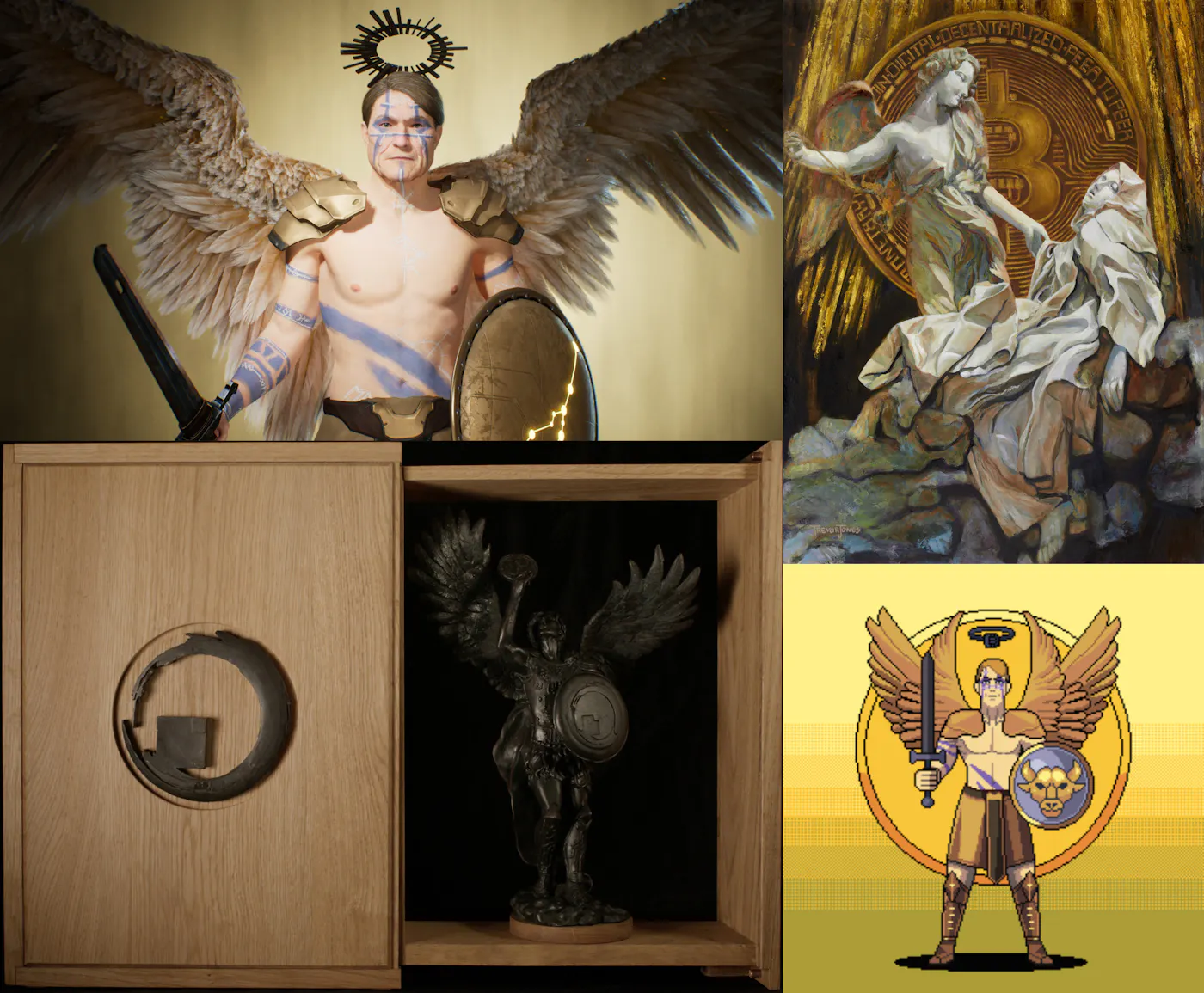
Trevor Jones’ New Genesis BTC Collection: CryptoAngels
Known for his innovative blend of physical and digital art, Trevor Jones continues to push the boundaries of the NFT space with his latest collection, CryptoAngels. Since his foray into Bitcoin-themed artwork in 2017, Jones has garnered a significant following, cementing his reputation with record-breaking sales and community events.
The Bitcoin Angel Journey
In 2021, Jones made headlines with his Bitcoin Angel open edition, selling 4,158 editions for an incredible $3.2 million in just seven minutes. This success paved the way for his latest venture, where he combines art, community, and technology in new ways. His annual Castle Parties, celebrating art, culture, and charity, have further cemented his place in the Web3 world.
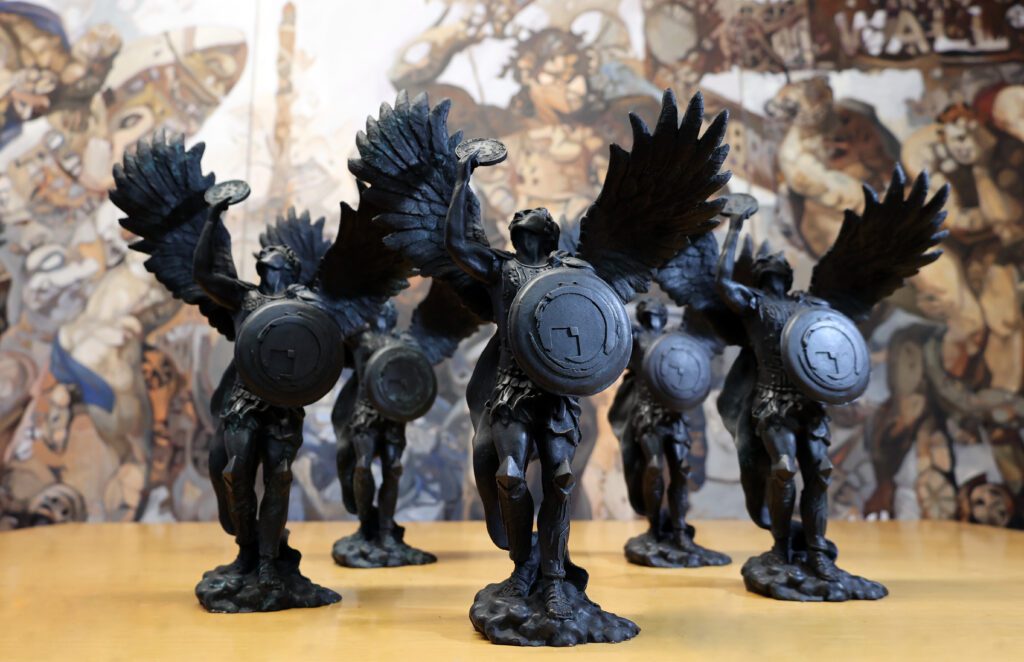
CryptoAngels Collection Review
Jones’ CryptoAngels collection is divided into two main stages: Archangels and CryptoAngels.
- Step 1: The Archangels The initial phase, Archangels, saw 21 collector’s packages sold for 87.9 ETH (approximately $335,291). Each package included:
- A physical bronze sculpture of the Bitcoin angel
- A 3D NFT avatar
- An Archangel Ordinal
Esteemed collectors like ModeratsArt, Batsoupyum, Bharat Krymo, Blondie23LMD, and 1Confirmation now lead the CryptoAngel army as Archangel Collectors.
- Step 2: CryptoAngels The second phase, set to launch on August 7, features 7,777 unique CryptoAngels. These will be available for minting via OrdinalsBot, starting with a whitelisting phase. Each CryptoAngel is distinct and named by Jones himself. The collection is organized into 21 cohorts, each associated with one of Archangel’s collectors, fostering sub-communities within the larger collection. Additionally, there are seven 1/1 CryptoAngels, making them exceptionally rare and not aligned with a cohort.
Connecting Bitcoin and Art
Jones, who has been a strong Bitcoin supporter since mid-2017, expresses his deep connection to the crypto community. He sees the CryptoAngels collection as a tribute to that community, bringing his iconic Bitcoin Angel motif to the blockchain.
“I have been personally investing in Bitcoin since mid-2017 and its ethos quickly inspired me in my crypto art journey. I have followed the growth of Ordinals since its inception and the CryptoAngels collection is my offering to a community that has welcomed me with open arms and given me the opportunity to bring my Bitcoin Angel motif to the chain where it was always meant to be,” said artist Trevor Jones.
Collectors’ opinions
“Bitcoin’s OG artist Trevor Jones, behind the Bitcoin Angels depositing ordinals on the immutable chain is a match made in crypto-native art heaven.” – Bharat Krymo (@krybharat – Archangel Collector)
“The 2018 Bitcoin Angel oil painting is one of the first crypto tributes to Bitcoin, so CryptoAngels on Ordinals is a natural extension of Trevor’s artistic journey” – batsoupyum (Archangel Collector)
Interactive experience and limited editions
Rounding out the collection, 21 special Angels will be available to mint for $7 each on Base, playable in the exclusive retro arcade game, Dante’s Pixel Inferno. The game challenges players to guide their Angel through the nine circles of Fiat Hell, collecting Bitcoin and earning rewards. Each Angel in the game has unique abilities and weapons.
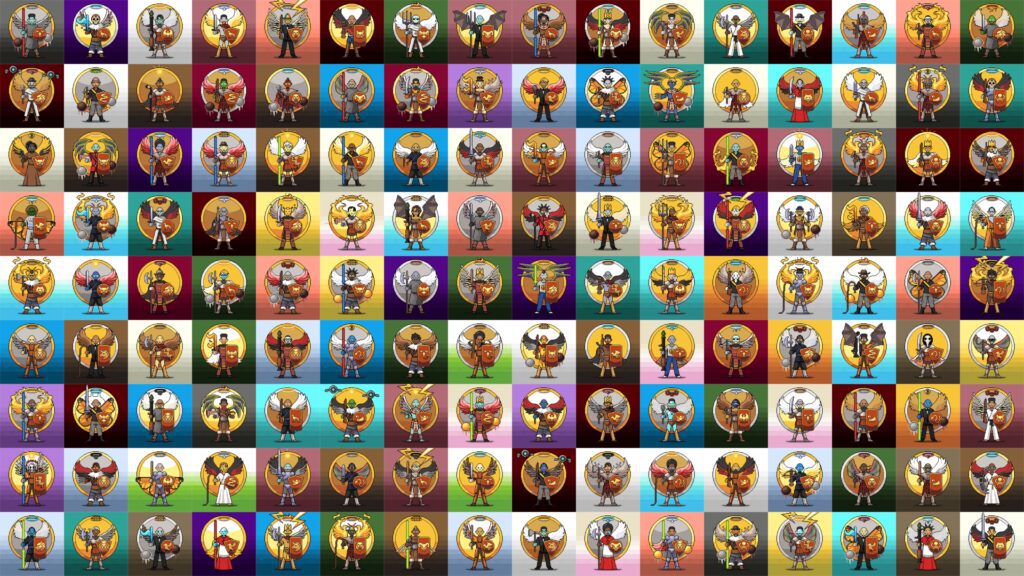

Whitelisting Opportunities and Community Engagement
Whitelisting (WL) opportunities are available through community partnerships, existing Bitcoin Angel OE and Trevor’s Ascended Angels holders, and weekly giveaways. To stay up to date and secure a spot on the whitelist, join Trevor Jones’ active Discord community.
TL;DR
Trevor Jones is launching the CryptoAngels collection on August 7th, building on his Bitcoin Angel legacy. Split into two stages, Archangels and CryptoAngels, the collection includes unique NFTs and physical artworks, fostering strong community connections. Exclusive gaming experiences and limited minting opportunities enhance engagement. Join the Discord for your chance to win.
-

 Nfts1 year ago
Nfts1 year agoShardLab Launches ZK-Based Tool for Digital Identity and NFT Vouchers
-

 News1 year ago
News1 year agoWallet recovery firms are abuzz as stranded cryptocurrency investors panic in the bitcoin boom
-

 Bitcoin1 year ago
Bitcoin1 year agoBitcoin, Ethereum, Solana and Cryptocurrency Markets Look Ready to ‘Send’ as Stars Align, According to Investor Chris Burniske
-

 Altcoins1 year ago
Altcoins1 year agoThree Altcoins Poised for Significant Growth in 2024: ETFS, OP, BLAST
-
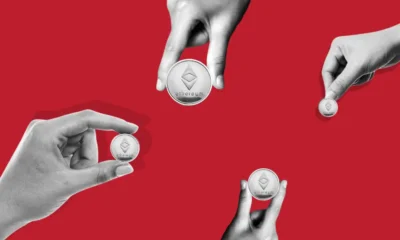
 Altcoins1 year ago
Altcoins1 year agoAccumulate these altcoins now for maximum gains
-
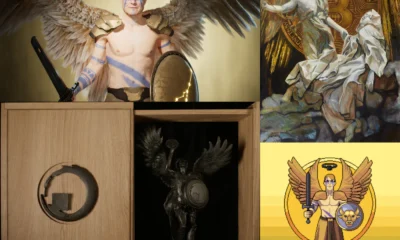
 Nfts1 year ago
Nfts1 year agoOG Crypto Artist Trevor Jones Unveils Groundbreaking Collection of Ordinals | NFT CULTURE | NFT News | Web3 Culture
-

 Bitcoin1 year ago
Bitcoin1 year agoBillionaires are selling Nvidia stock and buying an index fund that could rise as much as 5,655%, according to some Wall Street analysts
-
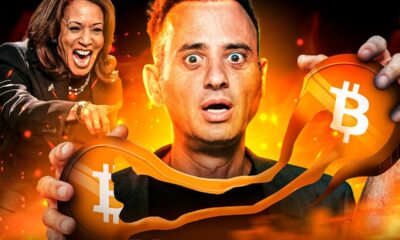
 Videos9 months ago
Videos9 months agoKamala just won the boner! [Bad For Crypto]
-

 Videos1 year ago
Videos1 year agoLIVE FOMC 🚨 Could be CATASTROPHIC for Altcoins!
-

 News1 year ago
News1 year agoA Guide for Newcomers & Beginners – Forbes Advisor
-

 Videos1 year ago
Videos1 year agoAttention: a historically significant BITCOIN signal has just appeared!
-

 Videos1 year ago
Videos1 year agoSTOCK MARKET FUD! ⚠️ [Why This Is GREAT For Bitcoin Traders!]






